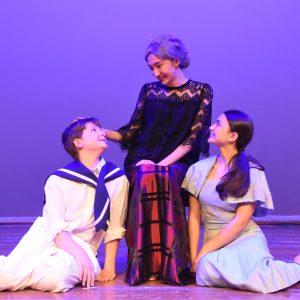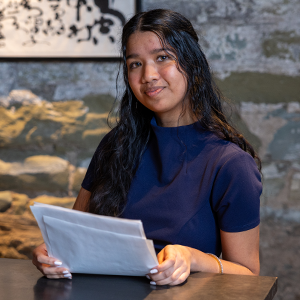The Man Behind the Curtain

For Matt Acheson, puppets aren’t just something he remembers enjoying as a child. They’re what pays the bills. He has designed and produced some of the most famous puppets on Broadway.
His company, AchesonWalsh Studios, has created puppets and stage props for, among others, The King and I, War Horse, The Secret Life of Bees, Candide and The Wizard of Oz. Most recently was The Pout-Pout Fish, his first foray into children’s theater. After he took his 7-year-old daughter, Esa, to a show, she was bored, so Acheson redesigned the puppet. The play reopened in October and has been on the road since, on a tour that’s booked for the next six months. The show got a good review in the New York Times, with Acheson and his partner receiving accolades for their work:
“Taking Pout-Pout’s odyssey to the stage required visual punch, and the show’s directors, Matt Acheson and Fergus J Walsh, of AchesonWalsh Studios, have put plenty into the production design. They have created an inventive set—thick strands of fake kelp are draped over rolling clothes racks—and even more imaginative large-scale puppets.”
“For me, I think it’s just the … there’s something about watching a piece of wood on stage, and the actors focusing all of their attention on this thing,” says Acheson, who moved to Mt. Lebanon last year with his wife, Deana, and their daughter, and set up a studio in their McConnell Mill Lane house.
“Then once it comes alive, it’s the job of the puppeteer to keep it alive. The amount of care and focus to keep it alive during its story is kind of inspiring.”
Acheson, 45, had a winding path to his current place in life. He grew up in Detroit, the son of a theater director. His day care was going to rehearsals and designing sets with his father, who also had puppeteer friends who turned Acheson on to the craft.

Acheson attended Michigan State University for a couple of years, followed by a stint at the Art Institute of Chicago. It wasn’t until he spent time in Europe attending state-funded operas and adult puppet shows that he thought he might make a go of puppeteering as a living.
“It was amazing to see everyone’s imagination revert to what we were when we were kids,” he says. “It was cool seeing all these puppets act out these adult themes. It was an epiphany moment for me. I realized I could do all the aspects of it.”
At the European Dance Development Center in Arnhem, Holland, where Deana was studying, they met a Russian puppet maker and performance artist who agreed to show them puppetry skills. Later, they backpacked through Europe together and encountered puppets in Prague, Belgium and Italy. Each time, Deana says, his eyes would light up.

“One of the most fun things to do with Matt is talk about art,” she says. “We love most of the same artists, always have. Over the years, he’s been my own incredible jukebox introducing me to my most beloved musical artists.
“Now that his studio is in our home and I’m also working from home, he can simply come upstairs and grab me so we can mull over something he’s working on for a client. He usually asks me about scale, or if what he’s making actually looks like what he means it to.”
In his time, Acheson has designed a robotic Statue of Liberty, life-size marionettes and shows that have taken place in 5,000 gallons of water set to music.
“Within all of those, there are amazing days and then really frustrating days,” he says. “And then in every show there’s a moment that puppets start retaliating. They won’t waste any time in humiliating you. Things break all the time. In a moment of live theater, it’s kind of like, ‘What do we do to get through this?’ But most audiences don’t notice. You just can’t panic.”





